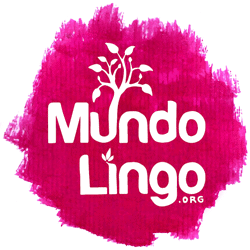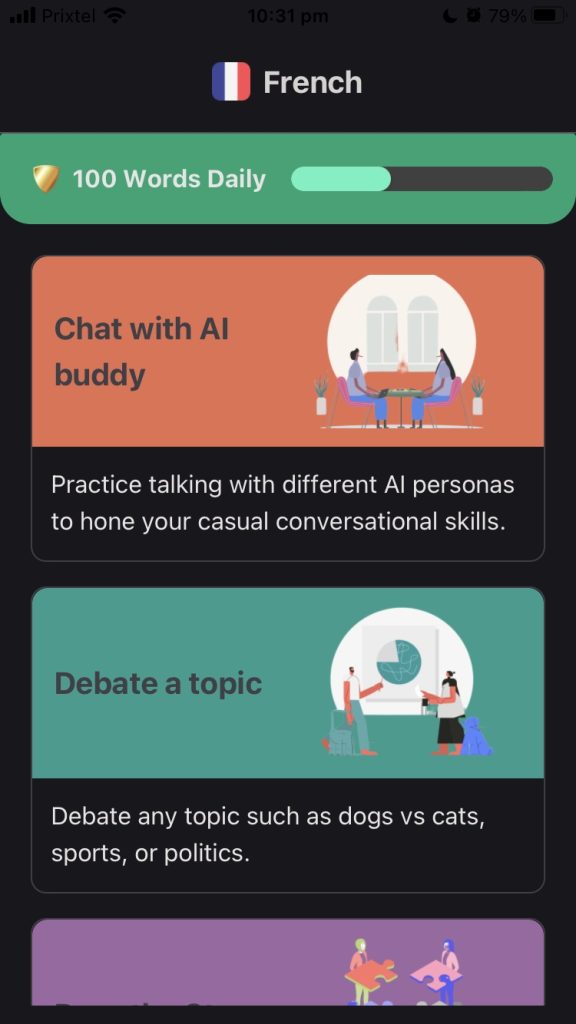It can be difficult keeping up the motivation to learn languages, because anything worth doing takes time, and languages are no different. This tweet appeared on my twitter feed a while ago…
I guess I lost my motivation to learn languages. 😥 I mean I thought I was taking a break but I just can’t bring myself to continue anyhow. Any advice? Please, help me 😭😭
Learning languages is like any hobby that requires practise, or any other long term project. Yes, it is something that requires time and effort, but for most of us it is something we do for fun or to improve our life in some way. If the motivation to learn languages disappears, it becomes work.
People often say that motivation doesn’t last. Well, neither does bathing – that’s why we recommend it daily.
Zig Ziglar
There are many reasons we blame for a lack of motivation to learn languages. However, research shows that motivation follows action.
“Motivation does NOT lead to action, rather action LEADs to motivation”
Jeff Haden, The Motivation Myth
Let’s look at some of the things people blame for a lack of motivation, and what we can do about them to increase our action, and consequently our motivation.
- Problem 1. It is taking so long, and I feel like I am not making any progress.
- Problem 2. I don’t have anyone with whom to practise
- Problem 3: I just can’t be bothered being disciplined with it
- Problem 4: I can’t afford to buy a lot of language learning resources
- Problem 5: I don’t know what language learning resources to use.
- Problem 6: I really want to learn, but I can’t bring myself to do it.
- Conclusion
Problem 1. It is taking so long, and I feel like I am not making any progress.

I personally find each language takes a different amount of time, depending on my interest and engagement level.
Learning languages to a high level takes time.
Yes, I know the name of this blog is “Learn Languages Fast”, but even people who learn *fast* still take time.
And the longer it takes, the more likely we will struggle at some time with our motivation to learn languages.
My first “other” language (outside of 2 years of school French) was Dutch – I probably at present sit somewhere around B1/B2 as far as conversational skills go. (I can read and write a little, but nowhere as well as I can converse.)
I got to that stage after about 12 months (in two stints) living in the country, 18 months in the middle writing letters, and then weekly online chats with a group from Polyglot Conference since 2020.
My next language after Dutch was Auslan. I got to around a C1 level after 7 years of living in the community.
For neither language did I undertake more than three months formal learning.
When I was learning Dutch and then Auslan, my processes (by memory… after nearly 25 years, so don’t quote me!) were something like this:
Dutch
- 3 month exposure = A1
- 7 month exposure = A2
- 12 months in-country contact + 18 months remote practising = B1
Auslan
- 20 hours = A1
- 6 months (once/week) = A2
- 18 months (once/week) = A2/B1
- 2 years (once/week) = B1
- 4 years = solid B2
- 7 years (inc. daily exposure) = C1
In other words – you can expect to learn a lot to start with, and be able to express simple things quickly (mostly because you have learned by rote).
But it simply takes thousands of hours of exposure to acquire real fluency (and near native skills, if that is what you are aiming for). Especially in the expressive skills. (I talked about this in my post “10,000 hours to get fluent in a language? Or just 20 hours?“)
It is much easier (for me, anyway) to learn to speak in a language (because I know my own thoughts) than it is to understand what someone else wants to communicate, especially if you are not used to their typical vocabulary set or communication style.
Strategies to speed your learning progress
A. Set Specific Goals:
Break down your language learning journey into smaller, achievable goals. This will give you a sense of accomplishment as you achieve each milestone.
B. Track Progress:
Maintain a language journal to document your progress, note new vocabulary, and track improvements. Looking back at how far you’ve come can be motivating.
C. Use Time Management Techniques:
Allocate consistent, dedicated time for language practice each day. Techniques like the Pomodoro Technique can help maintain focus and prevent burnout.
Problem 2. I don’t have anyone with whom to practise
Finding people to practise languages with, either writing/reading or speaking/listening, can sometimes take some time.
However, there are many online as well as face-to-face options that you can explore.
Strategies to Find Conversation Partners
D. Language Exchange Partners
Find language exchange partners online or through local language groups. Practicing with native speakers can improve your speaking and listening skills.


Many larger cities have MundoLingo groups or other language exchanges to meet speakers of other languages.
Meetup.com is another online networking service that allows people to advertise classes and face-to-face meetups, and many conversation groups and classes can be found in their directory.
Local classifieds websites such as Craigslist, Gumtree in Australia, and the various partners of Gumtree like Kijiji, Maarktplaats and others, often have local tutors offering their services for reasonable prices.
I have previously had a wonderful French tutor that I found on Gumtree. I also tried a few others that weren’t as good. Sometimes it takes a bit of trial and effort.
You can also try local churches and cultural groups – sometimes they don’t have a website, but you can call their office, or call in and speak to someone, and they might be able to put you in touch with someone who is a native speaker in your target language.
This is especially true in larger cities, but if you live outside a major centre, sometimes you can use a cultural centre in a larger town or city to track down someone closer to you.
You may actually find that you can help improve someone else’s motivation to learn languages by having a one-to-one language exchange.
HelloTalk is another platform many language learners use to find the 21 century version of a penpal in their chosen language/s. It can be downloaded as an app onto your smartphone, or you can connect from the web service.
E. Online Language Communities
Join online forums, social media groups, or language learning platforms to connect with fellow learners for virtual practice.
Facebook also has a multitude of groups, some local that have face-to-face meetings, some purely online, where you can connect. Some groups include a “mentor” opportunity, where native or more fluent speakers offer their time to mentor students of the language.
ITalki is a web based network where you can connect with not only paid online language teachers, but also “community tutors”, many of whom are happy to do language exchanges, written or spoken. Many people find the personal connection really improves their motivation to learn languages.
F. Language Apps with Speaking Features
Utilize language learning apps that offer speaking exercises or AI-based conversation practice to simulate real conversations.
Language Learning with ChatGPT
Innovative language learning strategies are evolving beyond traditional Language Exchange Chats.
A novel option is to engage with AI, such as ChatGPT, developed by OpenAI.
Trained on extensive written language data, ChatGPT serves as an AI language partner accessible 24/7, providing real-time feedback on grammar, vocabulary, and syntax.
This AI tool is particularly beneficial for refining language skills, enabling learners to practice writing and speaking while receiving instant evaluations.
Conversly.ai

Conversly.ai, is a dedicated AI Chat application.
This app, available for French, Spanish, German, Russian, and Portuguese learners, offers personalized interactions with an AI ‘companion.’
Users can partake in discussions, storytelling games, or casual conversations, giving language practice a purpose-built touch.
The app stands out with its user-friendly interface and predefined conversational styles, amplifying the personalization aspect.
NOTE: It’s important to remember that ChatGPT, while a powerful tool, is still AI and not immune to errors. Occasionally, it might generate inaccurate information or predictions, commonly referred to as “hallucinations.” Despite its proficiency, learners are advised to verify information if contradicted by a native speaker.
Problem 3: I just can’t be bothered being disciplined with it

Discipline has always been my biggest downfall when learning languages.
Even when I love the idea of being able to communicate in a language, even when I don’t really mind the study…
the actual discipline of sitting down each day to do some study always seems to come waaaaay down the list…. after really edifying activities, like Netflix! 🙂
Every language learner has different things that work for them. Some people are super disciplined, others not so much. I tend to the “not so much” end… I love the results, but the process… not so much.
Strategies to Increase Discipline
G. Create a Routine
Establish a consistent daily routine for language practice, making it a habitual part of your day.
It doesn’t matter whether it is 20 minutes before you leave for work or school, 10 minutes on the commute, or the last five minutes on a language app before you go to bed.
Of course, the more time you dedicate to the practice, the faster you progress… but that is less important than creating an opportunity every day for a small win.
H. Visual Prompts – Writing down my goal

I find that if I write a note and stick it to the wall that reminds me WHY I want to learn the language, I am more likely to follow through. Often I like to make it a poster (super simple – I’m no artist), or add a flag, and stick it next to my desk.
I. Accountability Partner
Partner up with a friend or family member who has similar language learning goals. Hold each other accountable and check in regularly.
Even better – make your accountability partner your language exchange partner, and kill two birds with one stone.
J. Reward System
Reward yourself after achieving milestones. Treats like a favorite snack or leisure activity can serve as positive reinforcement.
Problem 4: I can’t afford to buy a lot of language learning resources

The reality is that it is quite possible to start your language learning with free resources.
Not all resources will be the most up to date, and they might not be a complete resource (meaning you may need to use a couple of different ones together). But that doesn’t mean they are useless.
My first French Assimil course was one I found from the 1940s. I had to check the language used was still relevant, but it taught me a great deal of foundational language.
Strategies for Language Learning for Free
K. Locate Free Resources
Explore websites, YouTube channels, and apps that offer quality language lessons, exercises, and practice materials for free.
The most commonly used are platforms like Memrise and Duolingo, which are mostly vocab, and there are an abundance of YouTube channels for nearly every language you might want to learn.
There are podcasts on Spotify and YouTube for many of the more commonly learned languages, and many free resources online (often designed for homeschooling).
You can even find some complete language courses too, if you are happy to use some older resources that are now in the Public Domain.
Try a few, see which style keeps you engaged (audio, video, written, vocab app, five minutes a day, a full text book lesson).
If you like the style AND the resource, just keep using it. If you like the style, but not the resource, look for similar products that you might need to purchase. If it doesn’t work for you – drop it.
L. Use Public Libraries
Borrow language learning books, audiobooks, and resources from your local library to access a variety of materials without spending money.
It is common to find high quality resources like Assimil, Teach Yourself, Linguaphone on the shelves of a good library.
And as far as apps go, Mango Languages is often available for free with a library membership.
M. Subscribe to Open Educational Resources (OER)
Look for open educational platforms that provide free or low-cost language courses and materials. MOOC platforms such as Coursera, EdX, Alison and FutureLearn often have language courses that you can audit for free.
Of course, if you want a certificate to validate your learning, you may need to pay a fee, but otherwise they are often available at no cost.
Problem 5: I don’t know what language learning resources to use.
Analysis Paralysis. The perfectionism that exists in this-here-Aspie-head often gets in my way as I start learning a new language. Which book? Which YouTube channel? Which podcast?
Strategies to Decide on Language Learning Resources
N: Research Resources
Spend time researching and reading reviews about various language learning resources to identify ones that align with your learning style and goals.
Check out the reviews on this site, and on other sites, to see what is currently available.
Join Reddit.com for language learning, or specifically for the language you want to learn, and see what other resources people have found useful.
O. Trial and Error
Experiment with different resources, such as textbooks, apps, online courses, podcasts, and videos, to find what resonates with you.

Reality? It doesn’t really matter. Choose one and try it. If you don’t like it, try a different one. Use what works for you.
My hint – if you have learned a language before using a resource that is also available for this new target language, try that brand again.
If you haven’t, and you are just wanting an introduction that will help you have some basic conversations with locals on vacation in France, Italy, Spain or Germany, I suggest the Teach Yourself Language Hacking series by Benny Lewis.
For many other languages, and for resources with a bit more depth, the Teach Yourself Language Series resources are resonably priced and offer a good introduction to many, many languages.
They use a variety of activities and tools to introduce the material, both audio and written, and you can split the lessons up into smaller chunks if you don’t want to do the whole lesson in one go.
Problem 6: I really want to learn, but I can’t bring myself to do it.

This one is a little more complex. This is not simply a situation where a particular barrier has come up that we aren’t sure how to overcome it.
This is when nothing is enough to inspire us out of that funk at all. But we still have action we can take.
In these cases, it helps to spend a few minutes working out what might have squashed the motivation you had before.
Strategies to Overcome Feeling Stuck
P. Really connect with my reason for learning
Take some time out, go to a place where you feel reinvigorated, refreshed, and quiet. For me, this is a green space, with as much nature and as few people as possible. Take the time to reflect on your reasons for wanting to learn the language.
This can reignite your motivation and provide a sense of purpose.
Still can’t work it out? What CRAP has stolen your motivation?
Motivation to learn languages, or undertake ANY activity that we have decided to do, can wane for a number of reasons, but sometimes they aren’t immediately apparent to us. Mark Waldman is a neuroscientist, and one of the world’s leading experts on communication, spirituality, and the brain, and he has invented a tool to help us uncover these deflating beliefs.
Called a C.R.A.P. Board, the intention is to unveil all the Conflicts, Resistances, Anxieties, Procrastinations and any other problem you think you have that might be holding you back, and then help the brain to release them.
Download a C.R.A.P. Board Cheat Sheet you can print out and stick on your wall.
The information in the cheat sheet is taken from Mark’s Facebook post about the C.R.A.P. Board technique. I have just formatted it to be easier to read, and adapted it a little for language learning.
Listen to Mark chat with businessman John Asseraf about the C.R.A.P. board and how it works.
Create a Crap Board to Defuse Negativity – Waldman & Assaraf from Mark Waldman on Vimeo.
CLICK HERE TO DOWNLOAD THE C.R.A.P. BOARD CHEAT SHEET
Over time, if you notice new negative thoughts and feelings about language learning come up, write them on your crap board. Each day you will notice less negative thoughts. It’s true that old memories are always “there” in your brain, but you don’t have to listen to them or believe they are true. You can even talk to them and tell them to shut up! They usually will. Then focus on your 3 deepest values for that day and the new belief you want to embed into your memory.
Q. Visualization/Imagination Techniques
Imagine the benefits of being proficient in the language, like traveling to new places or connecting with people from different cultures.
I am not someone who actually enjoys the language learning process in and of itself.
I enjoy the fluency it brings me, the opportunity to connect with others, in a language that is important to them. I like to be just another one of the group, not the tourist in the room.
So when I am choosing a language to learn, there mostly has to be a friendship attached to it – either an existing one, or a potential one.
The only time this is not the case is when I am dabbling.
R. Underpromise, overdeliver

Start small. Begin with short, achievable language practice sessions. As you build consistency, you’ll find it easier to dedicate more time.
I tell myself “I will just do 5 minutes of vocab revision before I eat lunch”… or, I do it while eating lunch.
Of course, I often end up doing 10-15 minutes, which then makes me feel amazingly awesome for exceeding my commitment!
Conclusion
Remember that overcoming these challenges requires patience and dedication.
Mix and match these strategies to suit your personal preferences and circumstances, and don’t hesitate to adjust your approach as you progress on your language learning journey.
So what happens if none of this helps? Remember that we said at the start, research demonstrates that motivation follows action. That means, don’t wait for motivation to learn languages to come, just start doing!
Cate is a language enthusiast sharing her language learning journey here. Apart from her native English (albeit 'Strine'*!), as an adult she has also learned Auslan (Australian Sign Language) to approximately a C1 level, Dutch to around B1/2, French to around A2, and has a smattering of other languages.
B.A. (Anthropology/Marketing), Grad. Dip. Arts (Linguistics), Grad. Cert. Entrepreneurship & Venture Development, (CELTA).
Auslan Interpreter (NAATI), and general Language Nut.
*For more information on 'Strine', visit https://en.wikipedia.org/wiki/Strine

